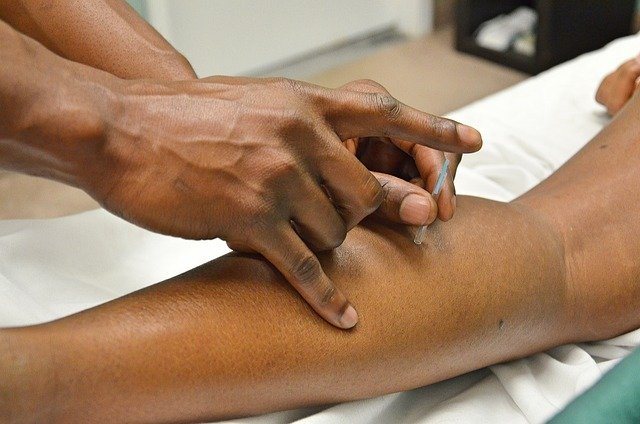Recognizing the Signs: Symptoms of Lymphedema
Lymphedema is a chronic condition that affects millions of people worldwide, yet many individuals struggle to recognise its early warning signs. This progressive disorder occurs when the lymphatic system becomes damaged or blocked, causing lymph fluid to accumulate in tissues and leading to persistent swelling. Understanding the symptoms of lymphedema is crucial for early detection and proper management, as timely intervention can significantly slow disease progression and improve quality of life for those affected.

What Are the Common Symptoms of Lymphedema?
The most recognisable sign of lymphedema is persistent swelling, typically beginning in the extremities. This swelling, medically known as oedema, often starts gradually and may initially be mistaken for temporary fluid retention. Unlike normal swelling that subsides with rest or elevation, lymphedema-related swelling tends to worsen throughout the day and may not respond to traditional remedies.
Early symptoms include a feeling of heaviness or tightness in the affected limb, skin that feels warm or tight, and reduced flexibility in nearby joints. Patients often notice that clothing, shoes, or jewellery fits more snugly than usual. The skin may develop a pitted appearance when pressed, and in some cases, individuals experience aching or discomfort in the affected area.
As the condition progresses, additional symptoms may emerge, including skin thickening, recurring infections, and the development of a characteristic “tree trunk” appearance in severely affected limbs. The skin may become less elastic and develop a leathery texture, making it more susceptible to injury and slower to heal.
Which Groups Face Higher Risk for Developing Lymphedema?
Cancer patients represent the largest high-risk group for developing lymphedema, particularly those who have undergone lymph node removal or radiation therapy. Breast cancer survivors face significant risk, with studies indicating that up to 20% may develop the condition following treatment. The risk increases when multiple lymph nodes are removed or when radiation therapy targets lymph node regions.
Individuals with congenital lymphatic abnormalities form another high-risk category. Primary lymphedema can manifest at birth, during puberty, or later in adulthood due to inherited conditions affecting lymphatic development. These individuals may experience symptoms without any apparent trigger or injury to the lymphatic system.
Other high-risk groups include people with chronic venous insufficiency, those who have experienced severe infections or injuries affecting lymphatic vessels, and individuals with certain autoimmune conditions. Obesity can also increase lymphedema risk, as excess weight places additional strain on the lymphatic system and may impair proper lymph drainage.
How Do the Stages of Lymphedema Symptoms Progress?
Lymphedema progression follows a predictable pattern through distinct stages, each characterised by specific symptoms and tissue changes. Stage 0, also called the latent stage, involves no visible swelling despite underlying lymphatic dysfunction. Patients may experience subtle sensations of heaviness or tightness, but these symptoms are often overlooked or attributed to other causes.
Stage 1 represents the onset of visible swelling that typically reduces with elevation or rest overnight. The skin remains soft and maintains its normal texture, and pressing on the swollen area leaves a temporary indent. At this stage, the condition is most responsive to treatment, making early recognition particularly valuable.
Stage 2 marks a significant progression where swelling becomes persistent and no longer reduces completely with elevation. The skin begins to thicken and harden, developing a spongy or rubbery texture. Pressing on the affected area may not leave an indent, indicating that fluid accumulation has progressed to tissue fibrosis.
Stage 3, the most severe form, involves massive swelling with significant skin changes. The affected limb develops a characteristic elephant-like appearance with deep skin folds, warty growths, and increased susceptibility to infections. At this advanced stage, treatment focuses primarily on symptom management and preventing further complications rather than reversing existing changes.
Treatment Options and Associated Costs in Australia
Various lymphedema treatment providers across Australia offer comprehensive management programs, though costs can vary significantly depending on the treatment approach and provider type. Public health services through state hospital systems provide basic treatment options, while private specialists offer more extensive services.
| Provider Type | Services Offered | Estimated Cost Range (AUD) |
|---|---|---|
| Public Hospital Clinics | Basic compression therapy, education | Bulk-billed to $200 |
| Private Lymphedema Specialists | Complete decongestive therapy, custom garments | $150-$400 per session |
| Physiotherapy Clinics | Manual lymphatic drainage, exercise programs | $80-$160 per session |
| Compression Garment Suppliers | Custom-fitted compression wear | $200-$800 per garment |
Prices, rates, or cost estimates mentioned in this article are based on the latest available information but may change over time. Independent research is advised before making financial decisions.
The path forward for individuals experiencing potential lymphedema symptoms involves prompt consultation with healthcare professionals experienced in lymphatic disorders. Early intervention through appropriate treatment can significantly impact long-term outcomes, helping to maintain mobility, prevent complications, and preserve quality of life. Regular monitoring and adherence to prescribed treatment protocols remain essential components of successful lymphedema management throughout all stages of the condition.
This article is for informational purposes only and should not be considered medical advice. Please consult a qualified healthcare professional for personalized guidance and treatment.




